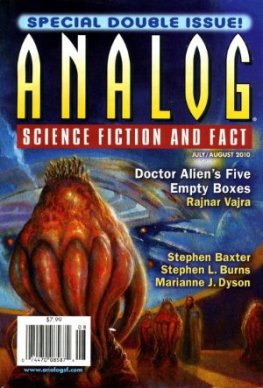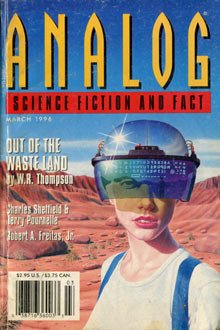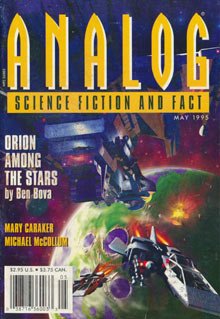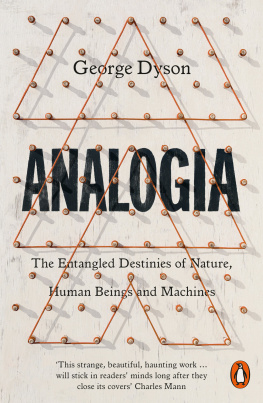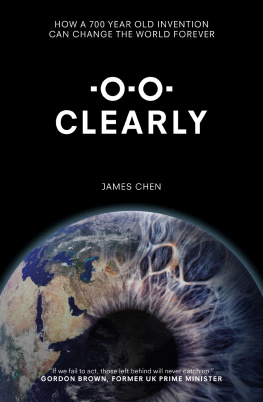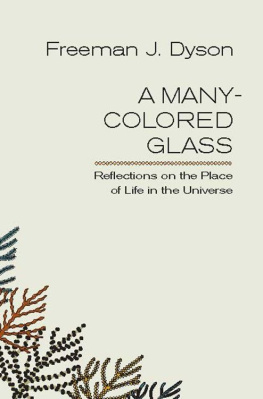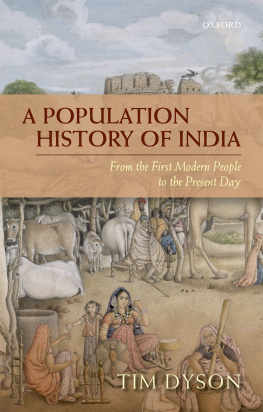James Dyson - Invention: A Life (Reduced Quality)
Here you can read online James Dyson - Invention: A Life (Reduced Quality) full text of the book (entire story) in english for free. Download pdf and epub, get meaning, cover and reviews about this ebook. year: 2021, publisher: Simon & Schuster, genre: Non-fiction. Description of the work, (preface) as well as reviews are available. Best literature library LitArk.com created for fans of good reading and offers a wide selection of genres:
Romance novel
Science fiction
Adventure
Detective
Science
History
Home and family
Prose
Art
Politics
Computer
Non-fiction
Religion
Business
Children
Humor
Choose a favorite category and find really read worthwhile books. Enjoy immersion in the world of imagination, feel the emotions of the characters or learn something new for yourself, make an fascinating discovery.

- Book:Invention: A Life (Reduced Quality)
- Author:
- Publisher:Simon & Schuster
- Genre:
- Year:2021
- Rating:3 / 5
- Favourites:Add to favourites
- Your mark:
- 60
- 1
- 2
- 3
- 4
- 5
Invention: A Life (Reduced Quality): summary, description and annotation
We offer to read an annotation, description, summary or preface (depends on what the author of the book "Invention: A Life (Reduced Quality)" wrote himself). If you haven't found the necessary information about the book — write in the comments, we will try to find it.
Invention: A Life (Reduced Quality) — read online for free the complete book (whole text) full work
Below is the text of the book, divided by pages. System saving the place of the last page read, allows you to conveniently read the book "Invention: A Life (Reduced Quality)" online for free, without having to search again every time where you left off. Put a bookmark, and you can go to the page where you finished reading at any time.
Font size:
Interval:
Bookmark:

Thank you for downloading this
Simon & Schuster ebook.
Get a FREE ebook when you join our mailing list. Plus, get updates on new releases, deals, recommended reads, and more from Simon & Schuster. Click below to sign up and see terms and conditions.
CLICK HERE TO SIGN UP
Already a subscriber? Provide your email again so we can register this ebook and send you more of what you like to read. You wil continue to receive exclusive of ers in your inbox.
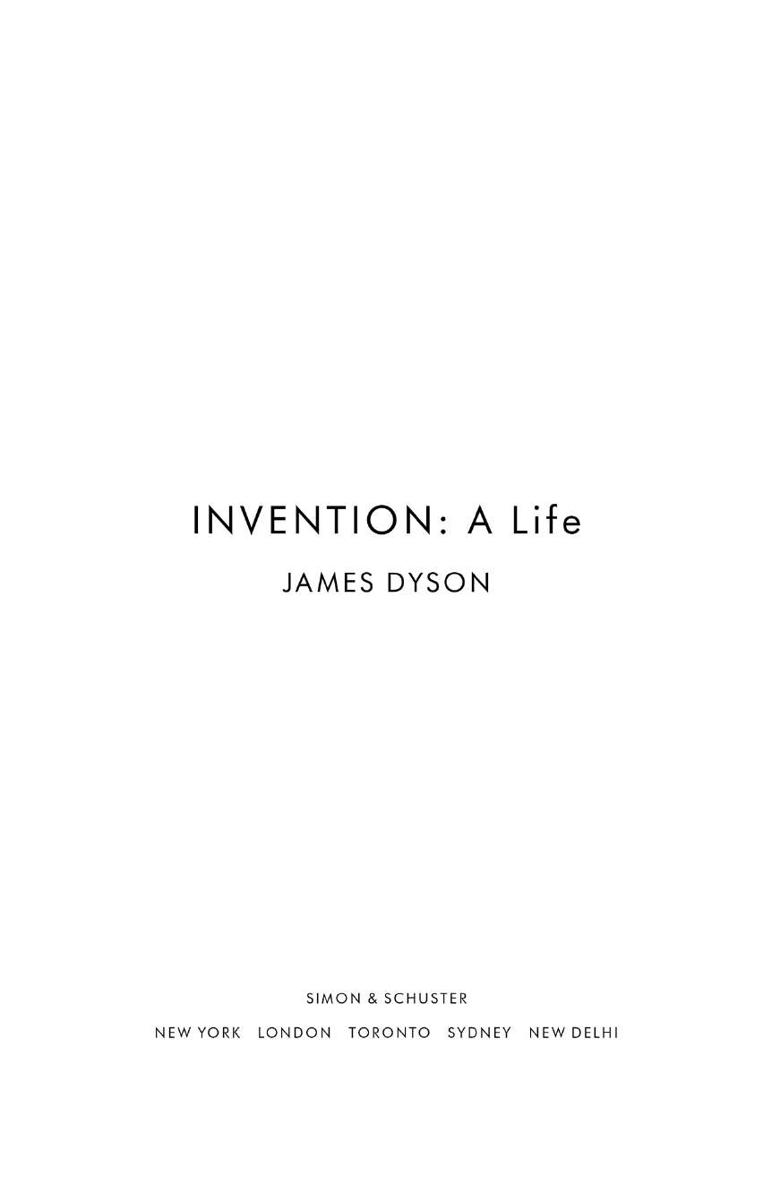
This book is dedicated to Deirdre, without whose love,
encouragement, advice, tolerance and forbearance, none
of this would ever have happened. Also, to Emily, Jake,
Sam, and our wonderful grandchildren, who make the
closest of families and whose enthusiasm for creating
things flourishes so strongly.
Introduction
In 1983, after four years of building and testing 5,127 handmade prototypes of my cyclonic vacuum, I nal y cracked it. Perhaps I should have punched the air, whooped loudly, and run down the road from my workshop shrieking
Eureka! at the top of my voice. Instead, far from feeling elatedwhich surely after 5,126 failures I should have beenI felt strangely de ated.
How could this have been?
The answer lies in failure. Day after day, with the wolf at the door, I had
been pursuing the development of an ever more e cient cyclone for col ecting
and separating dust from a ow of air. I built several cyclones each day, conducting tests on each one to evaluate its e ectiveness in col ecting dust as ne as 0.5 micronsthe width of a human hair is between 50 and 100 microns
while using as little energy as possible.
This might sound boring and tedious to the outsider. I get that. But when
you have set yourself an objective that, if reached, might pioneer a better solution to existing technologies and products, you become engaged, hooked,
and even one-track-minded.
Folklore depicts invention as a ash of bril iance. That eureka moment! But
it rarely is, Im afraid. It is more about accepting failure to be able to achieve that moment of ultimate success. Funnily enough, engineers who are good at
inventing things are never satis ed with their latest creation. They tend to look at it quizzical y and say, I now know how to make it better, which is a wonderful opportunity! This is the start of their reinvention, marking another leap in performance.
If would-be young inventors could see that pioneering a cure for
Alzheimers, for example, is not about eureka ashes of Archimedean bril iance but more about an intel igent pursuit of diligent research, they might be less
discouraged by the notion that bril iance is a prerequisite for their research.
Research is about conducting experiments, accepting and even enjoying failure, but going on, fol owing a theory garnered from observing the science.
Invention is often more about endurance and patient observation than brain
waves.
I wanted to share my story as the rst cohort of Dyson students graduate from Dyson Universityfor them, and al of us students dedicated to the pursuit of curiosity, learning, and embracing the joy of making things. It is a story told through a life of creating and developing things, as wel as expressing a cal to arms for young people to become engineers, creating solutions to our current and future problems.
Graduating fty-two years ago from the Royal Col ege of Art, I wasnt trained as an engineer or scientist, original y studying ne art but graduating with a degree in industrial design. I remember being excited that I would be
making a product that I had helped design, but not having a clue about volume manufacturing or marketing. I was nave and eager to learn, with a bloody-mindedness not to fol ow convention, to chal enge experts, and to ignore doubting Thomases. I am also someone who is prepared to slog through prototype after prototype searching for the breakthrough. If a slow starter like me could succeed, surely this might encourage others.
Now its not just me facing a steep learning curve. Im inspired by an extraordinarily talented team, hel -bent on creating new technology and delivering it to our mil ions of customers around the world. We share the same belief in pioneering our own way, with the same determination to overcome
di culties. Their loyalty and dedication is what has built Dyson into a global technology company.
My vacuum story began forty-two years ago when I was determined to develop a cyclonic system for separating dust without a clogging bag. As with most research and development, the early days were spent testing prototypes in order to discover certain truths about dimensions and shapes. This is the essential groundwork of learning the art, before starting the experimental work that might lead to a quantum leap. I looked forward to going to work, hoping
that maybe today I would discover something new and inch my way forward.
Usual y covered in dust, the failures began to excite me. Wait a minute, that should have worked, now why didnt it? I was scratching my head, mysti ed,
but then had another idea for an experiment that might lead to solving the problem. I was getting deeper and deeper into debt, yet happy and absorbed,
thanks to the support of my wife, Deirdre, who al owed us to put our house and home life at risk, while the bank was kind enough to lend us money. She and
our children o ered encouragement, love, and understanding, despite what was on the line. Without that, and the loyal support of close friends, I would have given up.
Invention is so very important today because young people are passionate
about saving the planet, improving the environment, and nding cures for life-threatening diseases. I believe that these problems can be solved by the diligent application of research and development. I would love to see more children and university students motivated to become engineers and scientists to make the
breakthroughs that they so want to happen. We should be encouraging the young to become doers, to help them strive to solve the problems of their age while looking forward to a better future.
During my career, I have tried to seek out those young people who can make
the world a better place. I have seen what miracles they can achieve. This book is aimed at encouraging them. Some may wel become heirs to my heroes
inventors, engineers, and designerswho make their appearance in these pages.
Like them, they wil not nd it easy and they wil need oodles of determination and stamina along the way. They wil have to run and run hard, which is how
my life story began
CHAPTER ONE
Growing Up
There are momentslong momentswhen the sea, sky, and sands of north Norfolk beaches coalesce to form a seemingly in nite horizon. And when the
early tide washes in and the ground beneath your feet re ects the big skies like a giant mirror, it can feel as if you are running through some ethereal space free of visible boundaries or restraint.
The rst thing I knew I was good at, and something that I had taught myself
as a teenage schoolboy, was long-distance running. Once through the pain barrier, I found I had the determination to keep on running. Running early in the morning or late at night through that hauntingly beautiful landscape proved to be more than a ritual chal enge. It was an escape from school, al owing me to think that anything and everything was possible.
Next pageFont size:
Interval:
Bookmark:
Similar books «Invention: A Life (Reduced Quality)»
Look at similar books to Invention: A Life (Reduced Quality). We have selected literature similar in name and meaning in the hope of providing readers with more options to find new, interesting, not yet read works.
Discussion, reviews of the book Invention: A Life (Reduced Quality) and just readers' own opinions. Leave your comments, write what you think about the work, its meaning or the main characters. Specify what exactly you liked and what you didn't like, and why you think so.

